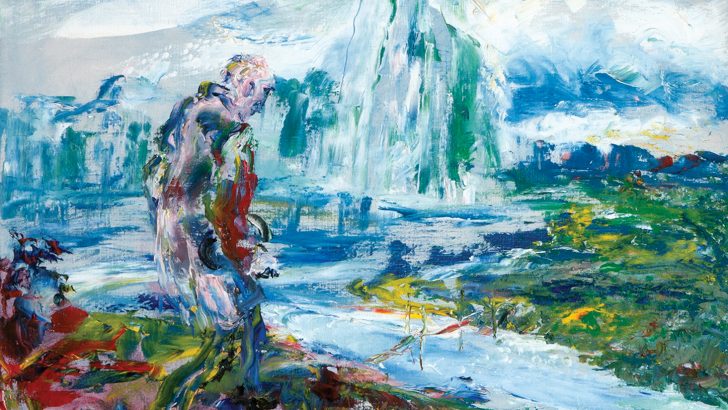The exhibition at the National Gallery of Ireland to mark the 150th anniversary of the birth of the painter Jack B. Yeats is one which everyone at all interested in Irish art – or indeed Irish culture in general – will want to see. The catalogue to accompany the show is also one to have.
Though inevitably some of the pictures are familiar (for instance Bachelors’ Walk, In Memory where a young woman places a rose in memory of the civilians killed in the shooting on the quay after the Howth gun running episode in 1914, an incident that presaged many more shootings, many more deaths). These have long been loved.
But the special appeal of this show is the large number of Yeats’ paintings that have been borrowed from private collections, and are rarely or never exhibited. There is then much that will be quite new even to long-time admirers of the painter, which give the show its very special appeal.
In my own case a print of The Mail Car hung in my bedroom as a boy, so that the strong style and vivid nature of Jack Yeats’ imagination was imprinted on my own at a very early age.
Modern
Yeats has often been used to illustrate modern Irish history. I discuss many of the ‘national images’ in my own book The Heart Grown Brutal, about the literature of the revolution.
But the feature of this exhibition is, I think, its ‘non-national’ nature. The core of the exhibition is a revelation of the private world of Yeats’ imagination, drawing largely on his childhood years in Sligo, but influenced (sometimes almost subliminally), by years in England as well. The joy he took in circuses and theatre and horses all that is here. But so too is a prevailing sense of melancholy. The street life of Dublin also strongly appealed to Yeats in his last years.
In the catalogue a most interesting graph traces Yeats’ production of paintings over the decades, and reveals the extraordinary vitality of the painter in his 70s. In an almost Picasso-like frenzy he turned out picture after picture. True most of these were small canvases, but they are all filled with (to borrow a phrase from his brother the poet) “passionate intensity”.
However the graph is based on paintings completed: in those earlier decades Yeats did a great deal of graphic work, such as illustrations and his William Bird cartoons – so his unit production was greater than it might seem if we count only paintings.
Many images are little seen or ‘new’. Take, for instance , Grafton Street, Conversation Piece, from 1924 in which a couple discussing the fashionable modes in a brightly-lit department store window (which I take to be Switzers) as evening closes in. Beside a small be-capped street urchin also gazes with longing into the fairy land of comfort and contentment. Note the date: the Dublin to which post-revolutionary peace had returned.
Explaining
Jack Yeats was resolute in not discussing or explaining what he painted. There are mysteries everywhere in his work. The Yeats scholars working through the National Gallery have cleared the ground by cataloguing and arranging the paintings. Now perhaps the more critical work of exploring the private mythology of Yeats’ imaginative world expressed in the all too often enigmatic titles he gave them.
There is still a lot to learn, but this exhibition seems (to me at least) to open a portal to the beginning of a deeper understanding of the ‘blue remembered hills’ in his land of lost content. It will take time: do we even now fully understand the images of, say William Blake, to whom the poet Yeats devoted so much time, and who greatly influenced him.
Again this exhibition shows Jack B. Yeats to be Ireland’s most interesting artist.
Everyone connected with the exhibition is to be congratulated on giving us all a marvellous revelation of the art of memory and association to enjoy in the post -pandemic future.


 Peter Costello
Peter Costello Jack B. Yeats, On Through the Silent Lands, 1951
Collection Ulster Museum © Estate of Jack B. Yeats, DACS/IVARO, 2021. Photo: NGI.
Jack B. Yeats, On Through the Silent Lands, 1951
Collection Ulster Museum © Estate of Jack B. Yeats, DACS/IVARO, 2021. Photo: NGI. 
